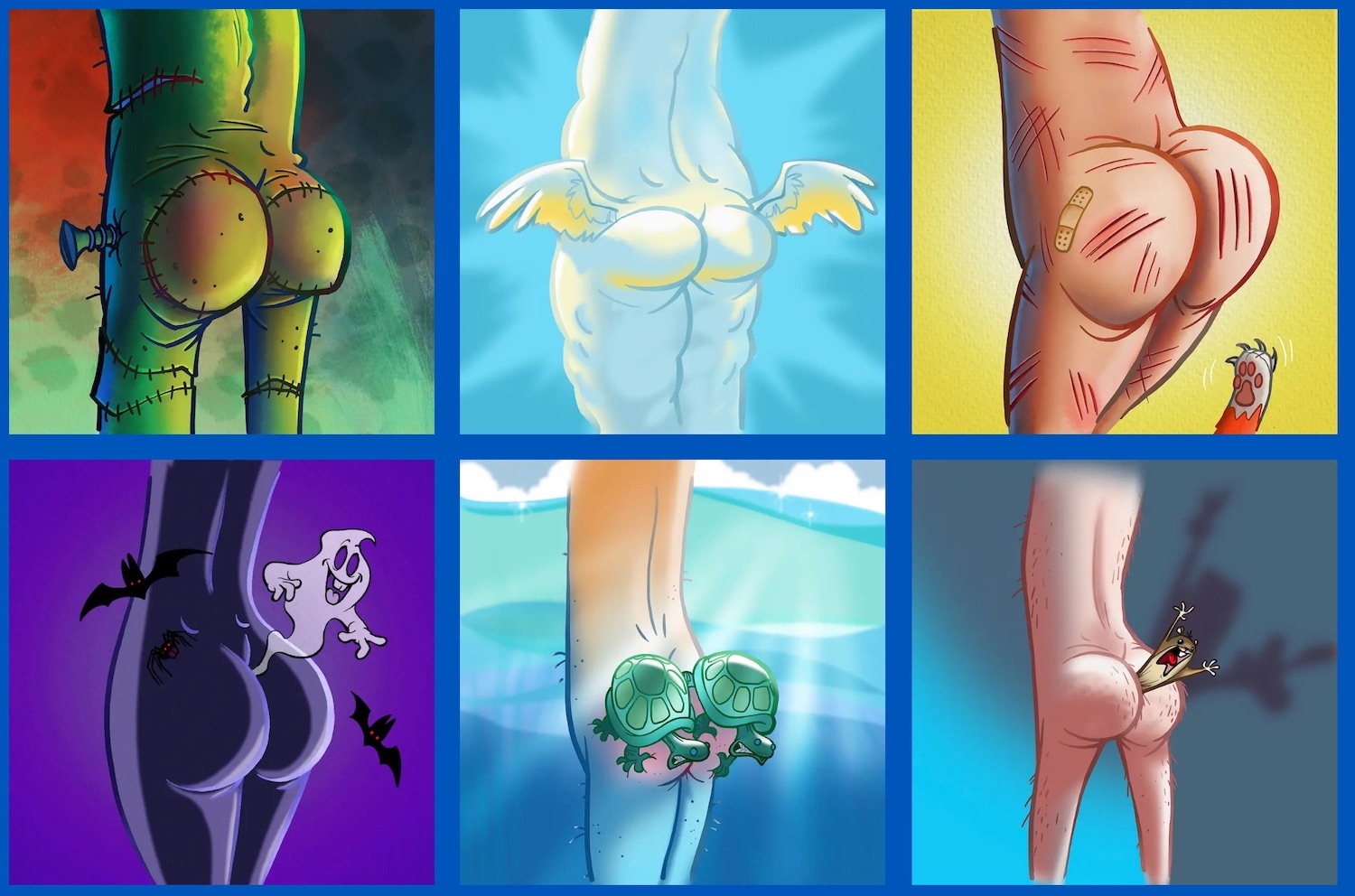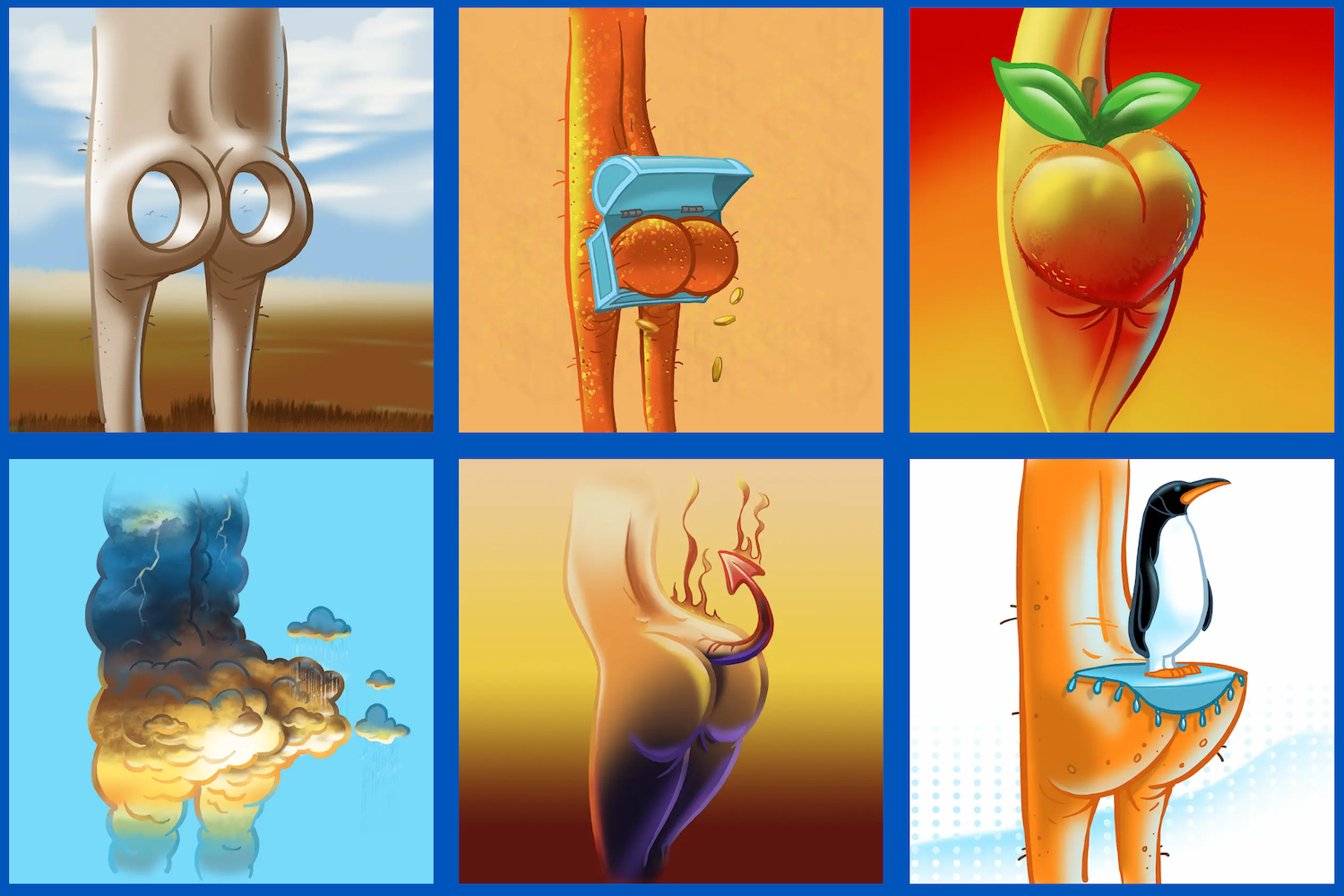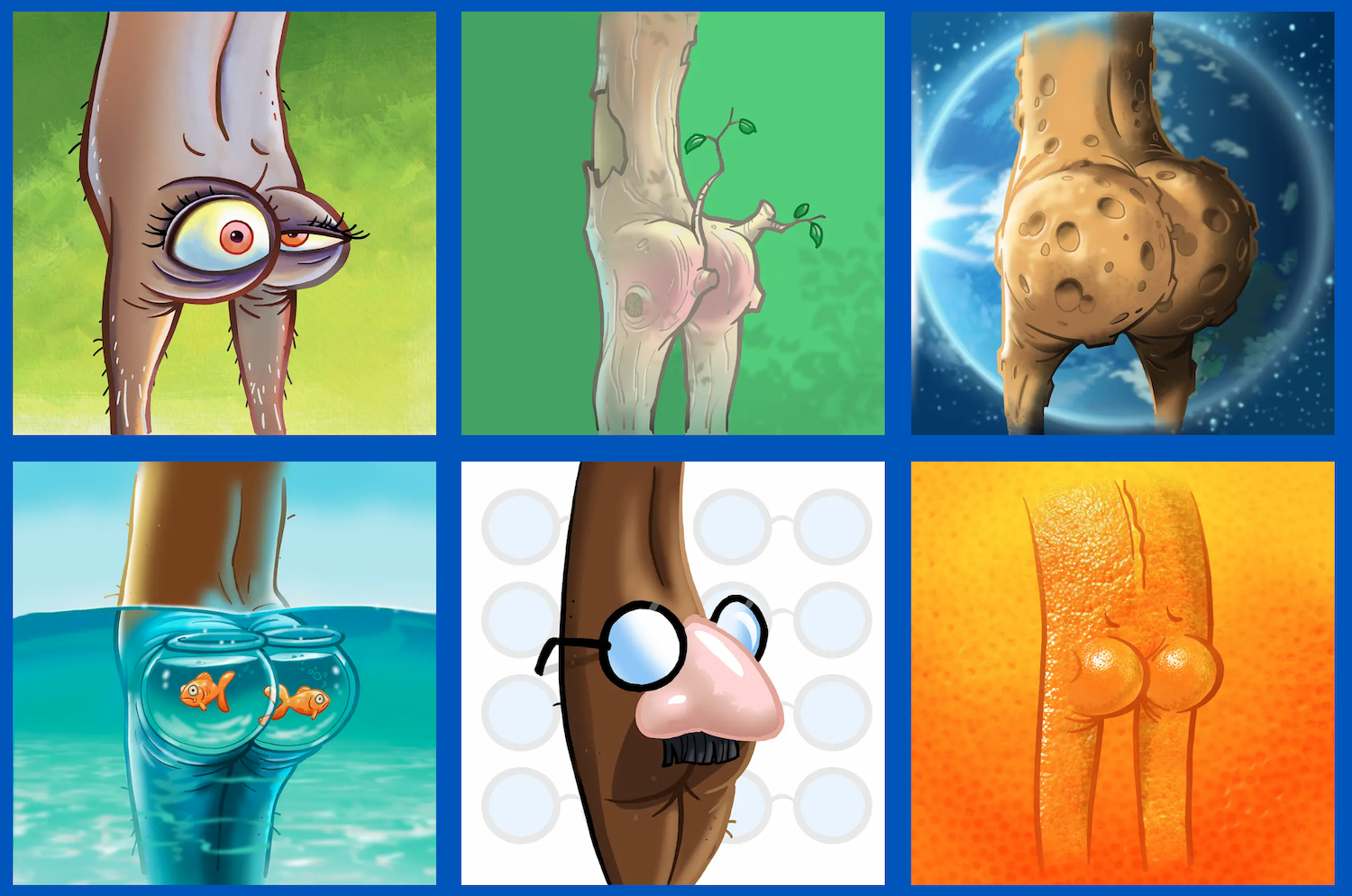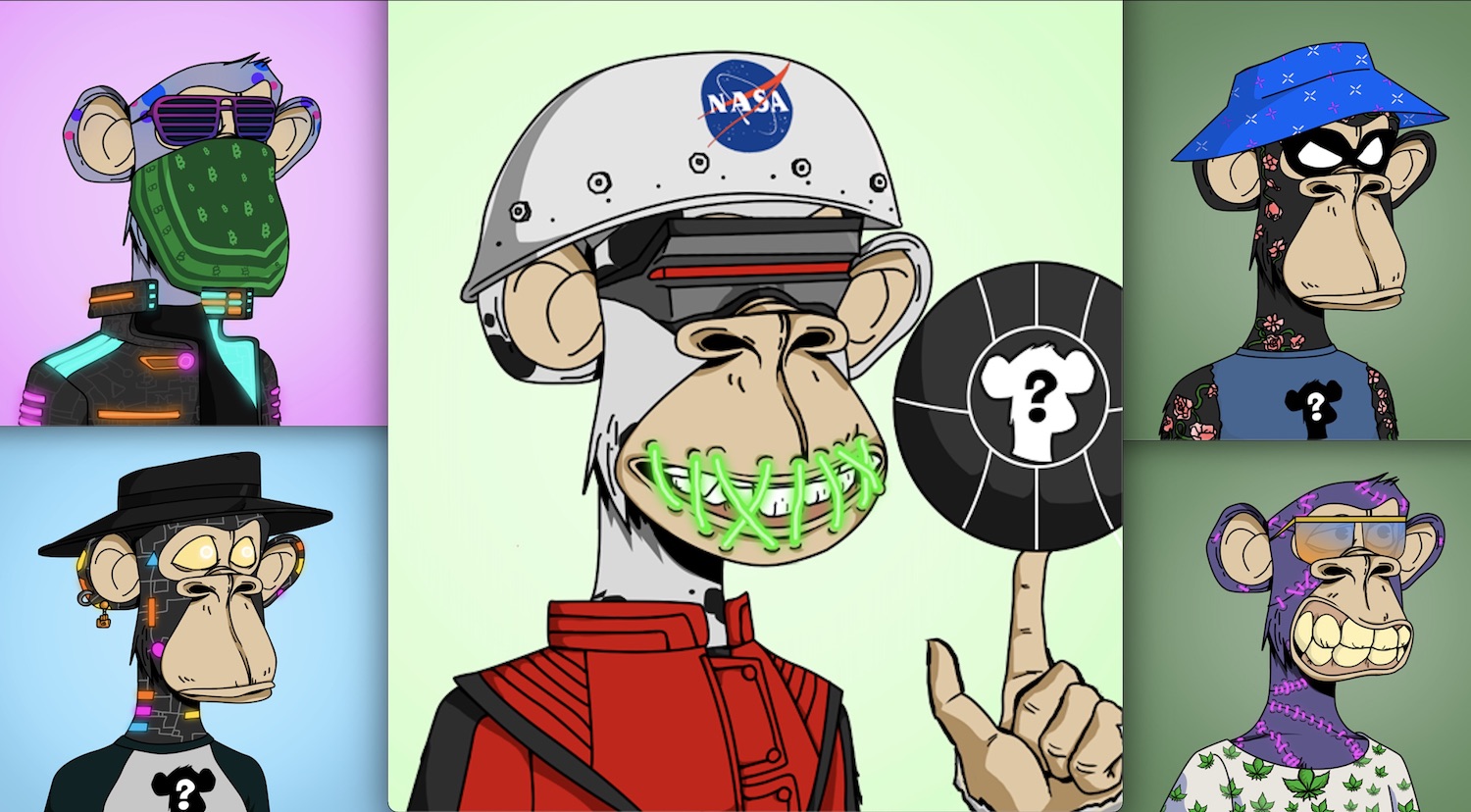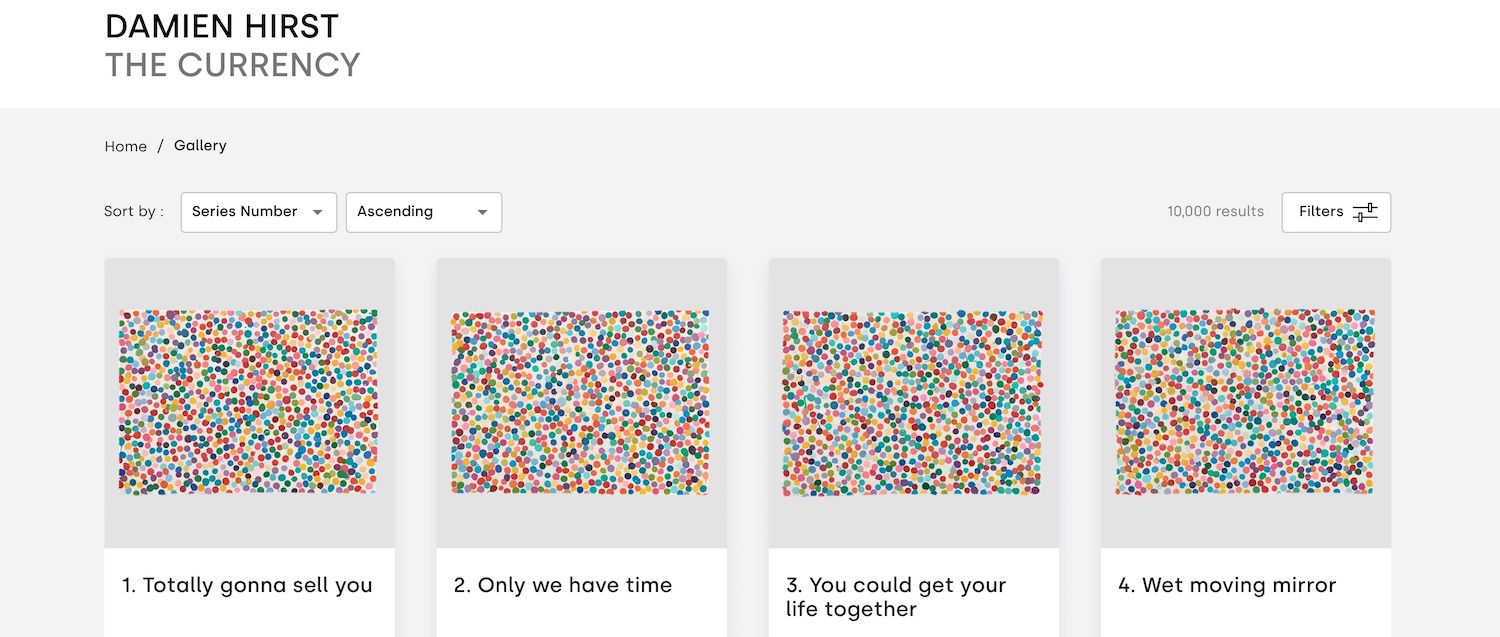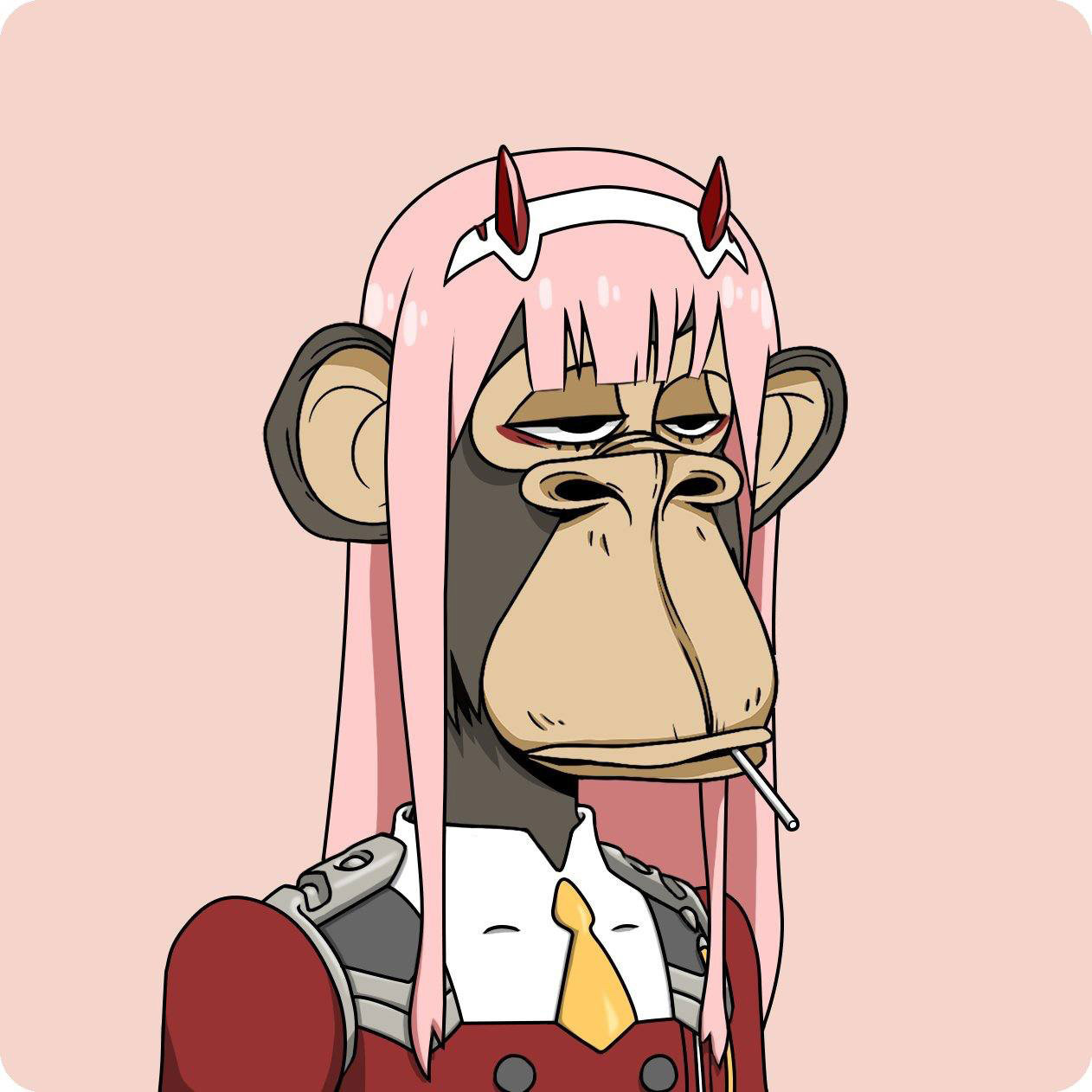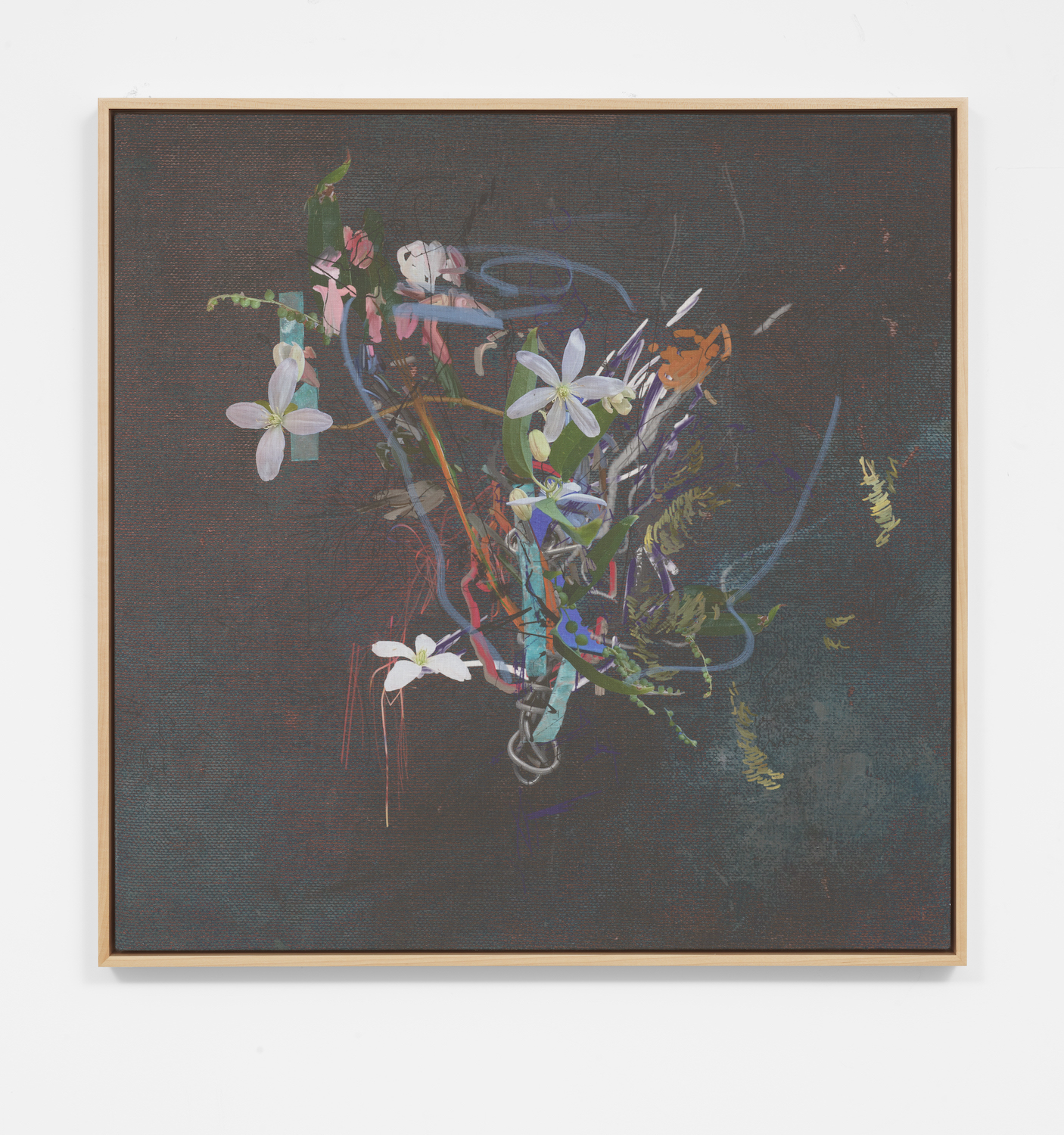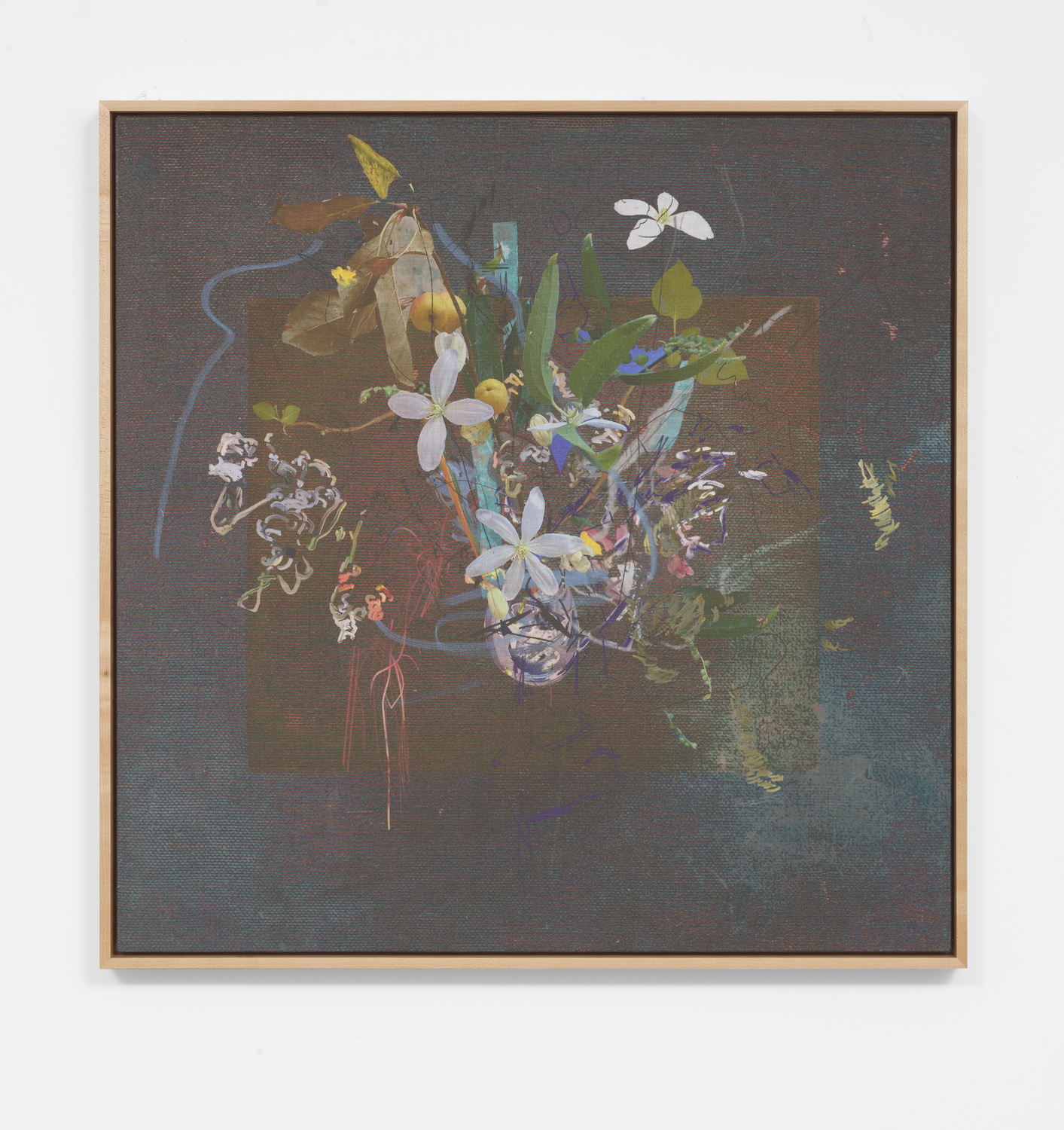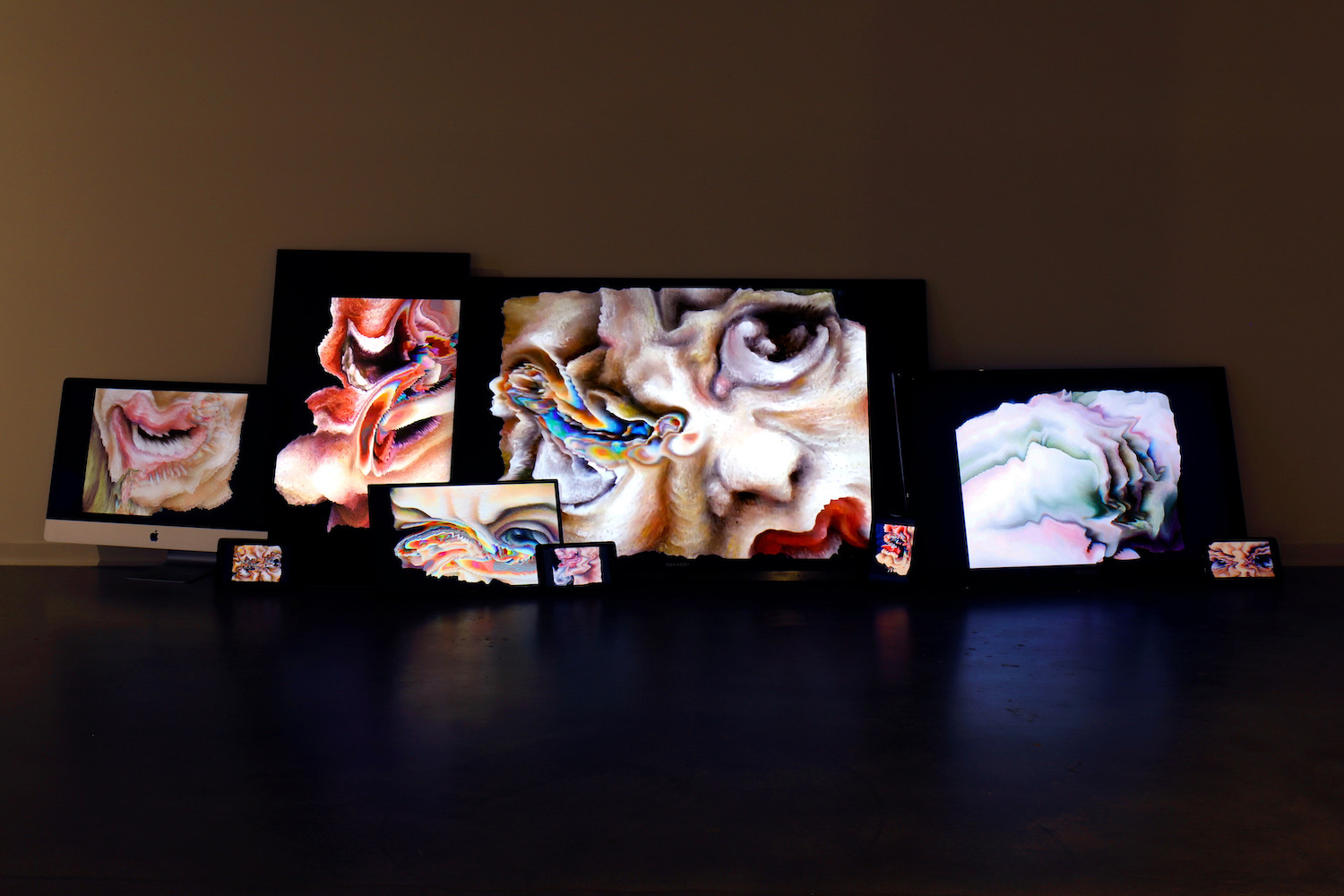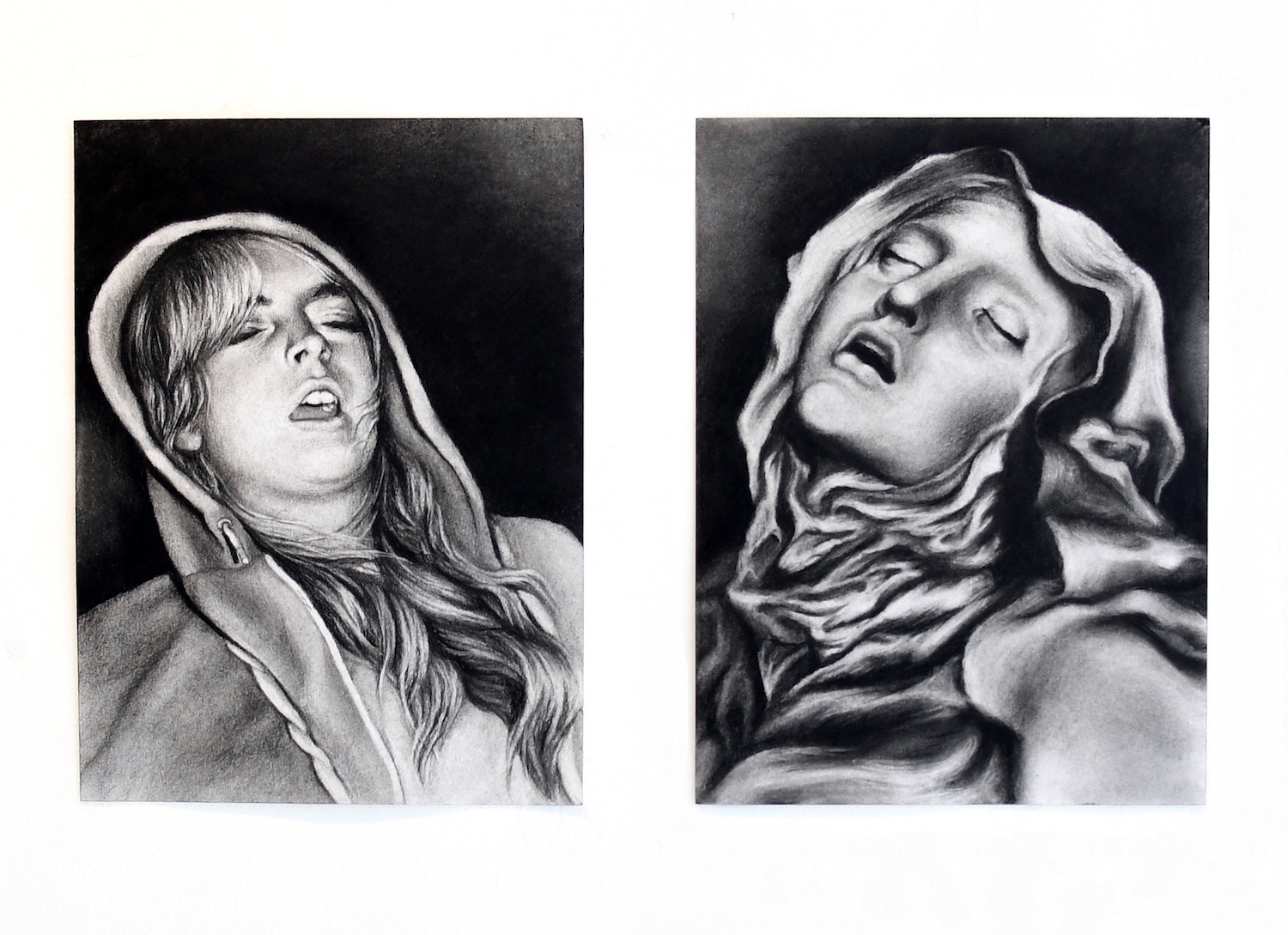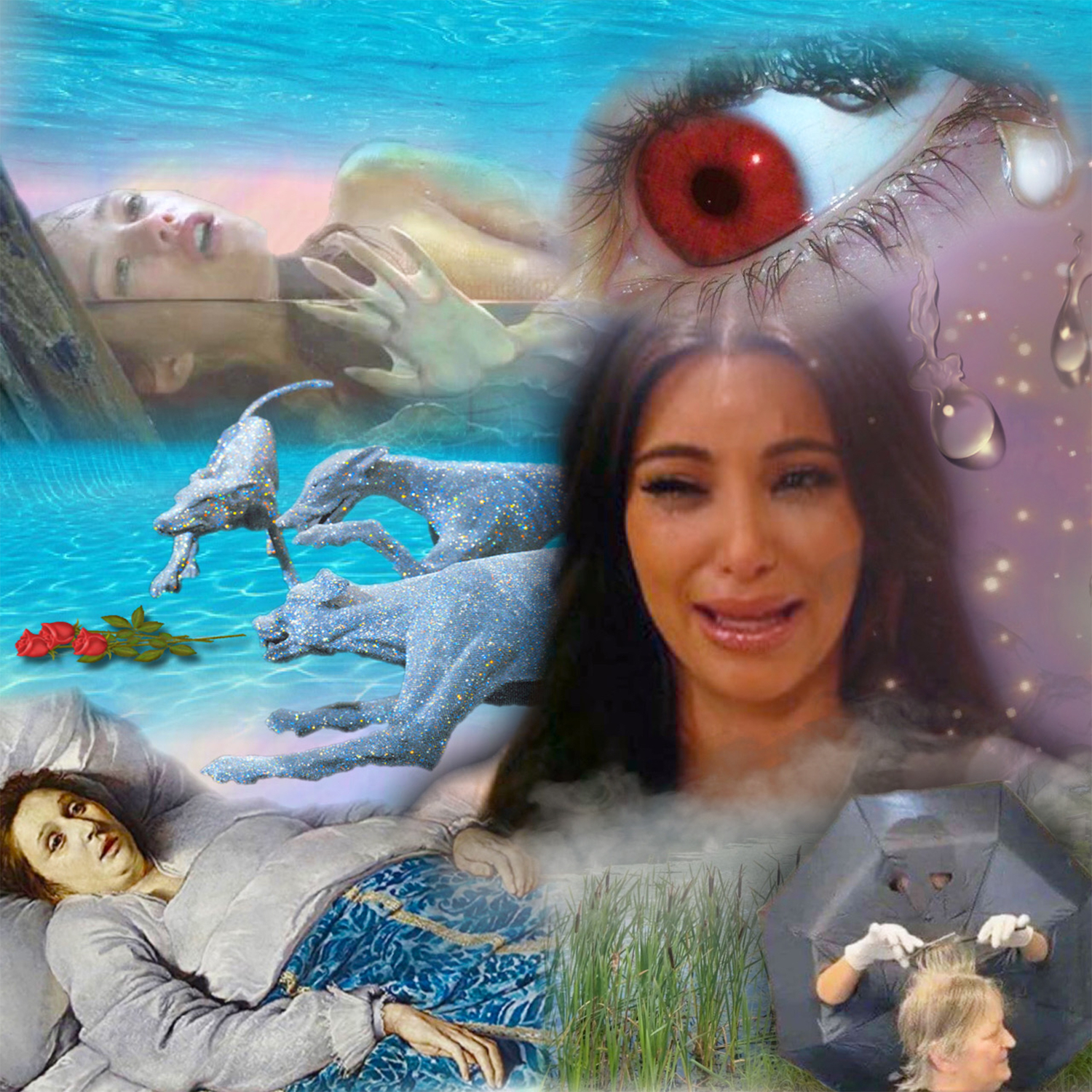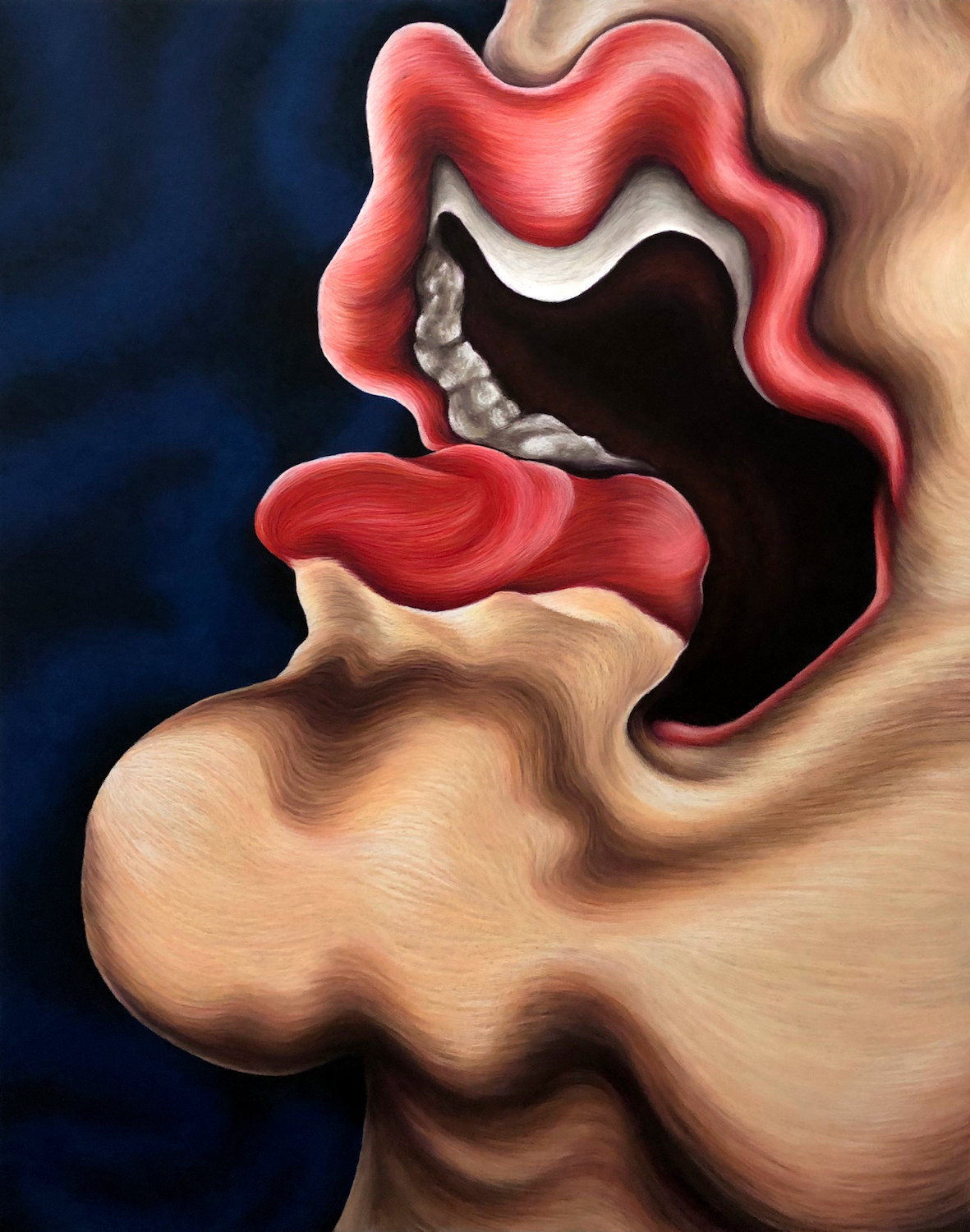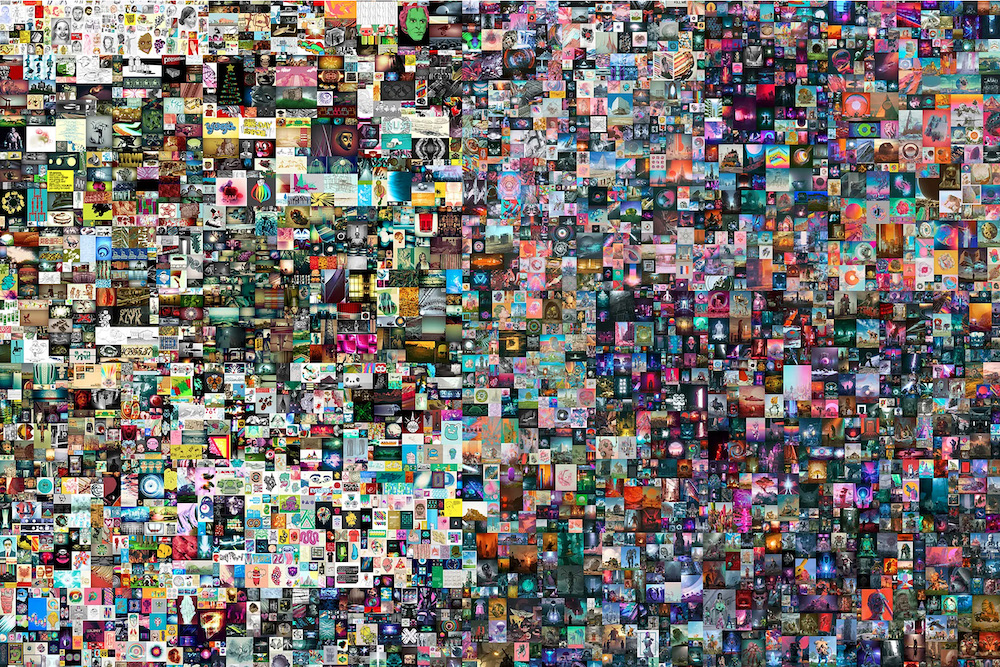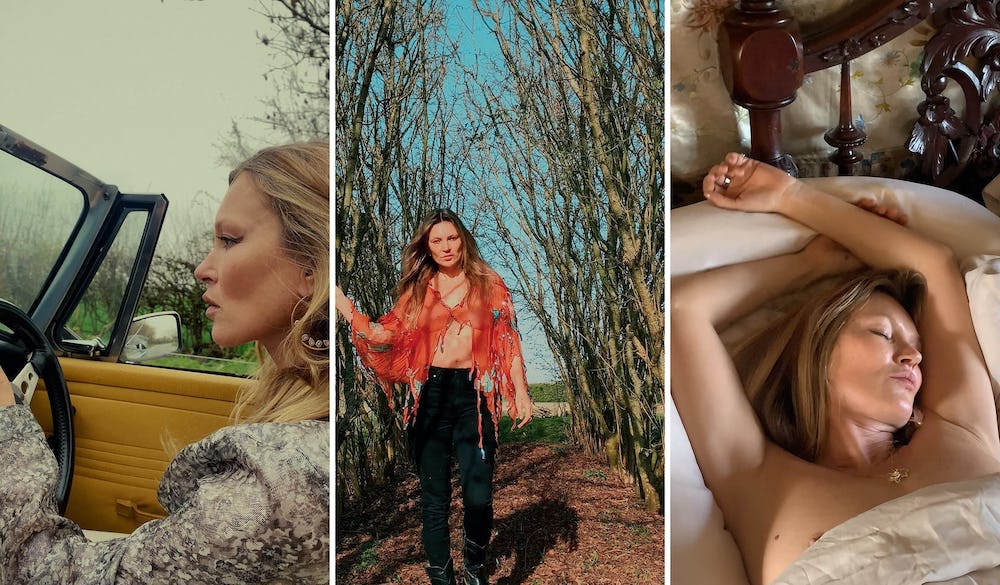Your cart is currently empty!
Tag: NFT
-

NFTs Flood LA
The DigitalNFTs are here, ushering in a new Golden Age in art. The flood of fiscal support into the NFT market has changed everything. This world has become very real and very serious, extremely fast. Investment firms are buying Degenerate Apes to flip! There’s a need to understand a new vocabulary, a new system of provenance, a new sales structure and the elimination of the historic gallery model.
My new column,“The Digital,” will be a place for elucidating the morphing digital art space, exploring crypto and NFT trends, understanding new verbiage, reviewing existing/upcoming collections, speaking with artists/developers, and shouting out my ridiculous advice in this space. —Seth Hawkins
As the rain poured down and invaded Los Angeles on a recent Monday, so did the self-proclaimed NFT degenerates. There were representatives from both big NFT blockchains: mutant apes, nuked apes, boogles, money boys, cets on creck, and—did I mention that Sir-Mix-Alot was performing at the Magic Eden kickoff party shilling his own “Bit Butts” NFTs. What a night it was—I like “Bit Butts” and cannot lie!
The attendees for NFT|LA, one of the first major IRL NFT events, was a mixed bag to say the least. Furries and crypto investors in their early 20s had on thousand-dollar shades, nerdy unkempt dev teams were huddled around laptops while gray-bearded old-timers tried to not miss the boat.

Six original NFT’s by Sir Mix-A-Lot for his project Bit Butts, 2022 The current state of affairs began to come into focus as I watched the Magic Eden keynote panel opening night. It included founders of some blue-chip Solana collections; Best Buds, Thug Birdz, Degods and for fun why not throw rapper Waka Flocka Flame into the mix. These are some of the heaviest traded collections on Solana—all in business for less than a year. To put this into perspective, the Degods is just about to pass the $25 mil in secondary market sales and they are only just hitting the six-month mark. What does that mean?
It exemplifies the fact that this space is so new and so rapidly changing that by the time this column has published, one of these collections may be out of favor. Even the whole Solana blockchain that these exist on is still said to be in beta. With much of the discourse at the conference being about NFT collections establishing and connecting communities, even noted musician and NFT enthusiast Steve Aoki was on stage vigorously yelling about how much comes from his online discord interactions.
I question what we are creating. Are these communities or investments? Do we ride the rocket to the moon and hop off with fiscal liquidity, or do we diamond hand for the community, as gravity inevitably pulls prices back to Earth?

Six original NFT’s by Sir Mix-A-Lot for his project Bit Butts, 2022 Of the 20 blue-chip art collections that currently exist on Solana, will five still be around in a year’s time? How will this ecosystem change in the next two months as the world’s largest website for NFT secondary market sales—Open Sea—onboards the hottest new blockchain—Solana. We are days or weeks away from something big with this merger, but I am no financial advisor, just an enthusiastic onlooker.
When do you dip your toe in the pool? If you have taken the time to read this far, then you can invest $20 in crypto and feel like you vested in the community also. Invest a sushi dinner’s worth in an NFT if you are feeling adventurous. Get in the Game. Invest yourself. Show people the picture on your phone just like you would your firstborn.
The Question is: How do you even buy an NFT and what the hell is a phantom wallet?
Keep reading “The Digital.”
-

From Mortar To Metaverse
CONTEMPORARY COMMERCE[et_pb_section admin_label=”section”] [et_pb_row admin_label=”row”] [et_pb_column type=”4_4″][et_pb_text admin_label=”Text”]Eth, bit, sol, meta, block chain, bored apes, crypto punks, kitty litter squad, non-fungible, minting, mining, tokenizing, gas fee, hot wallet, cold wallet, generative NFT, destructive NFT, candy machines, early adopters—yes this is English—just not the English of our youth or even the English of a few years ago. This is the contemporary language of commerce and the new verbiage for the art world to understand. If you don’t know what this means, start googling, because the ship has left the dock and you are waving goodbye as everyone else is already on the Open Sea.
Even a goofy ape with a hipster hat from a derivative collection can get a cover shot these days. If you braved the Omicron variant to be at Art Basel, you know that major galleries are moving from brick and mortar to the metaverse. Artists are no longer producing works with classical materials such as paint, bronze and photography but rather with AI algorithims, generative layers and 3D models. Art editions have somehow ballooned from 3+2AP’s to a 5,000 unit drop. And guess what, they cost more for 1/5000 than 1/3.
Crypto is no longer a speculative fiscal structure that exists only in the arena of the cyber elite, it is something that is bought and sold everyday—even by yours truly—on the coinbase app simply a cell phone thump away. The NFT world has brought a whole new type of collector into the speculative art world: a collector who is digitally wealthy, crypto-swole, and has very few places to spend that wealth.
If you were one of the smart (more so lucky) ones that spent a couple hundred bucks and bought in at the start of Bitcoin or Ethereum, you are now sitting on a hot or cold wallet with many many more zeros behind the one. Why sit there looking at your imagined digital $ that’s going to fluctuate, why cash out and pay taxes? In classic Buffet strategy—diversify your portfolio. What that means is, buy a pesky penguin, get some generative NFTs from your favorite artist, or buy a soon-to-be-minted farting cat from the Kitty Litter Squad. It is as if we have stepped through a tiny hidden door in the back of the blue-chip art-world space and have now walked directly into Willy Wonka’s factory. All is possible: you just need to mint it.

Online gallery of Damien Hirst’s “The Currency:” A collection of 10,000 unique NFTs that correspond with original artworks, which the collector can choose to exchange with the virtual NFT for after its acquisition. Much of the new pseudo-art that is taking over the NFT platform is being made by artists or collectives previously unknown to the general canon or common discourse—but does that matter? Sure, the art world elite (e.g., Damien Hirst) has a foothold in the NFT space, but what is a Beeple, a Bored Ape, or most importantly, what is generative art?
To all of these questions, there is a simple answer: those of us entrenched in the world of art understand that the rules were thrown out long ago—why ask so many questions? We are not some old man yelling at the kids to get off our lawn. Art is about taking new ideas to the limit, breaking the rules, and creatively making it up as we go along—cut up a shark, paint a lily pad, cover yourself in ketchup and cut a giant finger off, or maybe an ear—bring on the chaos.
The NFT world is no different; it just came out of left field and sucker-punched the traditional art world as COVID stole our focus. No one saw it coming—well maybe gamers, but the last two years were a perfect storm to launch the crypto-fueled NFT market. COVID, skyrocketing prices of digital coins, and the whole world locked in front of computers tinkering when they were supposed to be on a Zoom meeting. A Hollywood writer couldn’t have scripted this monumental change more perfectly. Regardless, we are here and it is not going away any time soon. (Even a goofy ape with a hipster hat from a derivative collection can get a cover shot these days.) So either find your digital footing or sit on the porch yelling at the kids.

Honorary Bored Ape #19 by BoredApeYachtClub (BAYC): an NFT collection of 10,000 original Bored Ape NFTs. Those previously established/successful/traditional blue-chip artists will always have a seat at the table, but they are being moved from first class to coach. A new class of artist is in town and, interestingly enough, many have never been successful in the traditional market, yet their NFT collections “mint out” in a matter of minutes for a cool couple of million dollars. As the time of papacy-ruled art wanes, Gagosian has given way to pixelized NFT collections that sell for much more and don’t need locations in Beverly Hills, Paris and Park Avenue.
Where will this end? It is currently boundless, with one of the paramount aspects to this revolution being that NFTs actually protect the artist. The wealthy have always been sheltered by their curated collections and set auction prices. The blockchain is the ultimate equalizer; true provenance and the smart contract is the one time in history when an artist can not only formally show that what they have created is original and unique, but can also collect royalties on secondary market sales. No longer is it only the whales that get whalier, our people—the creators—finally have protection in this new metaverse of art.
[/et_pb_text][/et_pb_column] [/et_pb_row] [/et_pb_section] -

Pioneering Petra Cortright
NFTs Are a No-BrainerPetra Cortright’s URL, www.petracortright.com, could be considered a work of net art. Practitioners of net art (beginning in the mid-1990s) often used the internet as their medium, sometimes populating their pages with images and data from other websites. Cortright’s home page is a montage of appropriated animated gifs that include twirling roses, dragons, smiley faces, twinkling and spinning globes, as well as a straightforward list of links dating back to 2006 that takes viewers to her myriad projects. While celebrated for her net art, Cortright rose to prominence with a series of YouTube videos where she recorded performances in front of her webcam, often using stock special effects combined with silly, campy and girly gestures. The works attracted a following which inspired Cortright to devise an algorithm based on views to determine the price of each work. Ever entrepreneurial, it is no surprise that Cortright has begun to create NFTs.
While Cortright has segued from screen-based net art to NFT’s, her digital works have also been presented as room-sized projections and as framed, printed images. She is a master at manipulating digital files, be it those culled from the worldwide web or created in Photoshop. Her recent photographs add to and subtract from pictures of the natural landscape to become evocative abstractions that have an otherworldly presence. Cortright responded by email to my questions.

women-celebrities.com_Vogue Fashions Travel + “mardi gras”, 2021 Digital painting on Belgian linen JODY ZELLEN: Can you speak about how you got started as a digital artist and the evolution of your practice from net art to performance-based videos, to installations. Then to more gallery-oriented photographic works and finally to NFTs.
PETRA CORTRIGHT: I wanted to be a graphic designer when I was younger. I thought that was the only option to be artistic and work with a computer, and at the time it was. I quickly realized that I despised the idea of people instructing me to “change” things to some client’s taste, so I dropped out of two art schools trying to figure things out. I struggled for a long time; the only outlet I really had was the internet. Early groups of new-media artists who later became net artists who later became post-internet artists and so forth. I have a painter’s brain; there was very little precedent for any painting being done on computers. I liked using video in a painterly way, to see how I could make live effects feel like brushstrokes. I posted them online because there was nowhere else to put them—I wasn’t in school anymore and all my friends and peers were online. I was involved in groups online and that’s how people got to know the work. People would email me asking if I wanted to be in shows. I was happy to have shows but would always inform the gallerist I had no money to produce anything physical. So physical work was [only] produced if the gallery had some kind of budget. Later on, I started working with (an infamous) art dealer who helped me produce physical work. We have been working together for a decade now. I’ve always felt outside of the art world and like to experiment. There is not a lot to lose in doing what you want—contrary to what most people in the art world might tell you. NFTs were a no-brainer to engage with as I had basically already been making them for the last 15 years.
I consider you a pioneer and innovator with respect to the creation of digital works. Do you feel like you are part of an ever-growing (or shrinking) community, and how has that influenced your work and strategies toward exhibiting and sharing your works?
When I was young, I really felt part of a community online but I haven’t felt that way for years now. There are many factors to this: the internet has changed but so have I. In youth you seek things that you no longer seek as you get older.
What are your thoughts about NFTs? I know you have entered this marketplace; how did it go for you? How do you conceptualize an NFT edition in relation to the other works you make? Do you think it is a viable way to “sell” art?
I’ve released a couple hundred of them—it’s gone great. I had no expectations, and everything has exceeded my expectations. The normal “art world” barely seems like a viable place to sell art, NFTs feel just as “real” as that.

SHAGGY MP3 BOOMBASTIC_Schwingungsanalyse Saudi Chamber of Commerce and Industry, 2021 Digital painting on Belgian linen While it is (seemingly) easy to create digital artworks, to mint NFTs as an individual is pretty complicated as you need numerous accounts and cryptocurrency to start, and once the work is available to see and buy, it seems the “sales” really are dependent on marketing and (self) promotion—more so than, for example, having work on the walls of a gallery. I know you said selling NFTs feels as real as showing and selling at a gallery yet there are differences, at least to me, between making physical objects that hang on a wall and making something 100% virtual that is sold and collected as a ‘”token.” Can you speak to these differences and your preferences as well as your feelings about the dependency on social media to spread the word?
There truly isn’t a difference for my work. I have made work on a computer for 15-plus years; it was already digital. It was more work to “print it out” for the galleries. The format of the work slot fit so easily into NFTs. The way I work, I can easily make a couple hundred paintings a day; people don’t seem to ever really understand that about my practice. I haven’t ever been able to release that many through the traditional art world, but with NFTs it’s a nice way to show how massively scalable the practice is. I have had to hold back for so many years, and I still have to even with NFTs. I produce more than I can release. You still have to cringe-ily shill and self-promote in the traditional art world as you do in the NFT world, so again I don’t really see a difference there either.
The sales of my NFTs have been surprising: entire new groups of collectors picked them up via Twitter. In a way I had very little to do with it, which I love. I think it’s a mistake to say it’s easy to create digital artworks. It’s not and that’s why there is so much bad work out there. Minting is straightforward and most sites are very user-friendly: plug and play and skins over open sea. With any new technology there is a learning curve, but people are trying to make it as accessible as possible.
-

A Conversation with Casey Kauffmann
Hot Girl Sh*tCasey Kauffmann is a hoarder of cyber content. Her image archive is a black hole of digital debris, infinitely consuming, tearing apart, and spitting out images—a spaghettification of visual culture. Kauffmann is known for her digital collages that populate her Instagram page, @uncannysfvalley. These assemblages are strange, fragmented manipulations of a visual language that Kauffmann continuously rearranges and reimagines. A manic hyper-femininity runs through her work, combining asses, baby animals, and the latest photoshop filter to disorient and warp popular significations of women. Her digital practice also informs her drawing practice, which serves as another filter to contort and subvert constructs of femininity. I had a conversation with Kauffmann about coming of age in San Fernando Valley, the construction of identity on and offline, and the current state of digital art.
LAUREN GUILFORD: How did growing up in Los Angeles in the ’90s shape your practice?
CASEY KAUFFMANN: My dad worked for Mattel for 30 years making Barbie commercials, and my mom is a former pageant queen from the valley—I have a picture of her in the Hollywood parade wearing a fur bikini. I also have three sisters, so I grew up with a really strong femme influence. Anyone who grows up in LA—especially women and femme-identifying people—can attest to the oppressive nature of physicality, consuming images and ideas about what femininity is and should look like. Growing up, I was a huge fan of Lisa Frank, which has obviously influenced my aesthetic. All of this set me up to have a relationship to visual culture that is both celebratory and critical.
How do you view the role of the internet and technology as it relates to the construction of identity, online and offline?
I think the starting point for me is my personal history and the influence of social media and reality television. [It was] an era that didn’t just want to be in people’s living rooms; it wanted to be in their bedrooms. This idea of intimacy is a construct that is synthesized by the user. We seek out authenticity—or some idea of authenticity—and try to make that online. Can you be real in front of a camera or in the presence of being viewed? Can you access some sort of realness when you’re performing and being watched? In daily interactions, every interaction is a performance. I don’t think there is a fixed self when it comes to the formation of identity in person-to-person relationships. When the internet was developed in the ’90s, there was this utopic idea that it would be post-racial, post-gender, post–all binary constructions of identity. But there is no escaping these binary constructions when all of the options given to you are facilitated and made by a corporate structure. There’s a back and forth between us creating ourselves on the internet and the internet creating us AFK (away from keyboard).

St LILO and St Teresa, 2017, charcoal on paper Can you talk about your series, “Who is She?”
“Who is She?” started as a theory I developed for my thesis show when I was making drawings of women from reality television, popular culture and art history. I’m always interested in that crescendo of drama—the height of hysteric identifying femme emotion, and when I say that, I mean mass culture’s idea of what hysteria looks like. When I started making these drawings, I realized I could isolate that crescendo of drama and how it comes down to facial gesture—the gesture of a hand or lips, that undiluted high drama. I would crop out that part of an expression, then use the liquify filter on Photoshop, which is used to make eyes bigger, boobs bigger, waist smaller, butts bigger. I would manipulate the face to have the highest amount of drama in that digital image, then draw it, scan the drawing, then liquefy it again. It’s a kind of back-and-forth between the physical and the digital. I was also thinking about how I could bring my digital practice into my drawing practice and manipulate the image to get it to an abstracted, almost monstrous level. The title refers to the fact that these are disembodied gestures decontextualized from their source, which is often how we experience femme images online and shapes this visual lexicon of what a woman is.
There is a kind of sinister and playful tension in your work. Can you talk about the role humor plays in your art?
I consider humor to be an entryway. I’m talking about really difficult personal emotions, and when things are funny, they can access a wider group of people. The humor in my work comes from a real place of anger, anger about feeling like you’re not being listened to or understood. These things that are funny are also inherently tragic. I feel super-aligned with recent trends like Yassification and bimbo culture. Growing up watching the reality television show Simple Life and shows like that really influenced my concept of femininity. But what I love about Paris and what I love about a lot of these very front-facing iconic women is that they have to operate in this place of self-awareness. This is a kind of macro version of what women experience on a micro level all the time. All of this really defines my sense of humor. I would rather laugh than cry.
Do you keep a digital archive of the images you collect online? Do images reoccur in your work?
It’s a fucking mess. It’s my goal not to repeat images, but it has happened from time to time and, when it does, it’s super interesting. I’m not concerned about what an image means; I’m more interested in the dynamics of popular exchange that brings the image to my phone. It’s crazy when I look at collages from 2015 and see an image I used a week ago. Like, how did this cycle back through Tumblr or Instagram and arrive on my phone again? Is there any way to understand the ebb and flow of exchange? When I think about this exchange, I think about Hito Steyerl’s essay “In Defense of the Poor Image,” which has been an important text for me.

#2022sofar, 2022, iphone collage You engage somewhat disparate audiences: the art world and the many sub-worlds that populate the internet. Navigating between these worlds must be challenging, but by doing so, I think you create possibilities for new art audiences. How do you keep these audiences in mind?
It’s challenging. I would say that when I make work, I think about audience in terms of accessibility and reaching a wide variety of people. Nothing gives me more joy than a 16-year-old commenting, “This is my life!” I identify with that sophomoric soul that’s inside of all of us saying, “Not fair!” I’ve become interested in the particular things that I can consume so I don’t think as much about what other people want from me. When it comes to traversing the art world, it’s tough—because I believe that conceptually the art world really understands and appreciates my work. Galleries claim to be interested in digital art, but they are still in the object-centric mindset and don’t really know what to do with my work—which has always been a struggle for digital artists. It’s sad that digital artists kind of get left behind in lieu of people making work that is more easily monetized. I also think my work would be more palatable if it wasn’t a bunch of pornographic images of women with their pussies in mud.
You’ve mentioned your intention to create a more “democratic” art world through your digital practice. How does your work expose the limitations of the commercial art world in terms of production and circulation?
My work is democratic in that it’s funny and made of things that everyone has access to. It unintentionally exposes limitations on production and circulation—conceptually and technically—but with the intention of accessibility. You don’t have to go to a gallery or a museum to view my work, which also creates a problem because the art world functions off of scarcity. So does the NFT space despite its inception of democratization and agency for the user. My work is not scarce. I have thousands of pieces, and anyone can view them. [It] is cheap in that sense, and I love cheap things!

Cassandra (drawn 4), 2019, oil pastel on paper Can you talk about your recent NFT endeavor? How do NFTs relate to your democratic hopes for art?
I still feel hopeful about the NFT space. I know a lot of artists making conceptually rigorous work that is being sold successfully as NFTs. It’s exciting to finally have a means and an infrastructure for compensation for work in its native form. Showing my work in a VR environment is fucking awesome. It’s kind of the way my work is meant to be seen. In NFT spaces, the work goes beyond my Instagram page and operates in an archival way for these images that will eventually be lost forever due to tech changes and software updates. [It] is archiving the moments that these images are popular. I also think many people who run the NFT space are involved in too many projects to actually give the things they are involved in the proper amount of care and attention they deserve.
How do internet-oriented practices such as yours comprehend the world and the historical moment we are in?
This is a difficult time for digital practices. The internet is experiencing a kind of constant narrowing, starting as this big utopian and democratic idea and, as corporate ownership continues its stranglehold, things continually narrow. Since the pandemic, I can already see the homogenization of content through ideas of popularity and likes. I believe we’re on the precipice of a change where things are coming more from co-creative spaces like the blockchain and the metaverse where people are more interested in creating spaces together rather than interacting with things that have already been created for them, like Instagram, where you’re subject to what these white men in Silicon Valley have made for you.
-

The NFT Craze
Art BriefThe digital artist known as Beeple sold an NFT for $69 million in cyptocurrency at Christie’s auction in March, 2021. The media treated this grotesque sale as if it revolutionized the art world, but if we separate reality from the hysterical hype, it clearly has not. An NFT stands for a “non-fungible token”—probably the most ridiculous acronym ever invented by digital geeks. An NFT is nothing more than a token on a shared digital ledger in the never-ending continuum known as blockchain. I’m not an expert on blockchain; however, suffice it to say, the owner of an NFT can signify his ownership by obtaining a token, or time-stamp in a digital ledger that constitutes a blockchain.
It’s important not to confuse ownership of an NFT with ownership of a copyright which is governed by copyright law. Common law copyright automatically attaches upon the artist’s creation of the work and statutory copyright is established by a filing with the US Copyright Office. The vast majority of the time when an artwork is sold the artist retains the copyright. The artist may also license the copyright if, for example, he or she wishes to merchandise an artwork’s image.
An owner of an NFT does not own the digital artwork or the copyright that attaches to it (ownership is retained by the digital artist). The buyer simply owns the NFT of the first edition of the digital file, but nothing else. Is NFT a con? I leave it to those who have read about the 17th-century Tulip bulb craze in the Netherlands to decide.
Beeple (Mike Winkelmann) had a successful career as a graphic designer of video games when he decided he would create a new digital image every day for 5,000 days. The digital file which set the record at Christie’s for a NFT contained all of those images and was titled Everydays: The First 5,000 Days. I’m not going to quibble about whether digital art itself is “art.” As far as I’m concerned, it is. The problem is that the NFT of a digital file is a digital ledger entry which does not constitute an artwork.
Over the last few years NFTs have become things of value and can be bought or sold online. In fact, prior to the auction of The First 5,000 Days, Beeple sold numerous NFTs of still digital images he created, as the market for NFTs got red hot. Many of the images making up the The First 5,000 Days and other Beeple digital works are freely available to view online (featured here).
A few weeks before The First 5,000 Days was sold, an NFT of Nyan Cat, a ubiquitous meme of a flying cat with a pop-tart body, was sold by its creator for the equivalent of $580,000 in cryptocurrency. Recently, there has been a frenzy for NFTs of short clips of NBA stars making spectacular dunks or blocks. A digital token of LeBron James blocking a shot went for $100,000 in January. A company called NBA Top Shot has made a market in NFT sports clips achieving $43 million in sales in January, 2021, according to The New York Times.

Stills from Kate Moss’s NFTs. Anything digital can be an NFT. The Times reports that Twitter CEO Jack Dorsey sold his first tweet for the equivalent of over $2 million in crypto. The insanity reached new heights in April as Vogue reported that super-model Kate Moss said she was selling NFTs labeled “Kate Sleeping” and “Kate Walking”—the proceeds, she says, will be donated to charity.
The art world has already heard from the most mercenary of artists—Damien Hirst and Takashi Murakami declared they would be selling numerous NFTs of images of their works. Many other artists are sure to follow their example.
Christie’s, deeply in on the NFT Beeple hype, clearly wants to establish a category of NFT auctions capitalizing on the craze. Christie’s proudly announced that the sale of The First 5,000 Days would be made in crypto—specifically in Ethereum—the second largest cryptocurrency after Bitcoin, both of which have hit recent market highs. This was the first auction where Christie’s accepted crypto for payment, including the buyer’s premium.
The buyer of The First 5,000 Days, billionaire Vignesh Sundaresan, who calls himself Metakovan (described by the media as a cryptocurrency “whale”), is the founder of Metapurse, an equity fund for cryptocurrency. Paying in crypto for his auction purchase helped bring legitimacy to Ethereum and other such currencies.
Metakovan (does anyone use their real name in this “brave new world?”) plans to build a digital museum to display his collection of NFTs. He has also established a “public art project” known as B.20 (it contains certain Beeple NFTs Metakovan purchased in December, 2020 for $2.2 million) The Times reported that Metakovan has been selling millions of fractional shares (“tradeable virtual tokens”) in B.20—so he’s no fool.
Neither is Beeple. Shortly after the sale to Metakovan, it was reported that Beeple converted all of his Ethereum into millions in good old US greenbacks, as the saying goes: “Trust your mother but cut the cards.”
